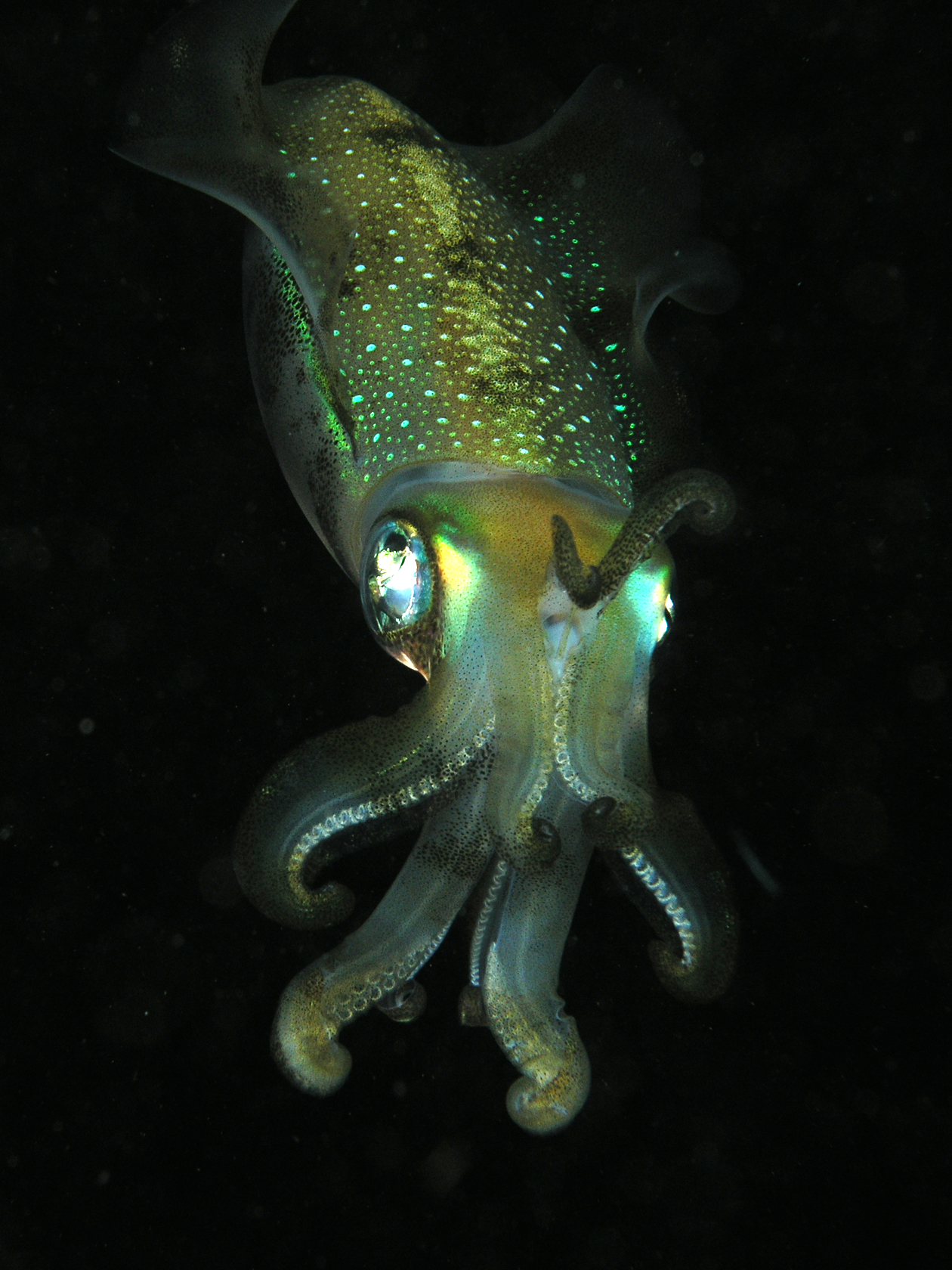|
The Festivus
''The Festivus'' is a publication about malacology and conchology. It is published by the San Diego Shell Club in San Diego, California. ''The Festivus'' started in 1970 as a shell club newsletter which was edited by Blanche Brewer. In 1976 Carole Hertz became the editor, and gradually ''The Festivus'' became increasingly scientifically respectable, and was transformed into a peer-reviewed scientific journal. Carole Hertz was the editor for 37 years. From 1985 up until 2014, issues of ''The Festivus'' contained scientific papers on mollusks, and each paper was peer-reviewed by a professional malacologist. Eleven issues were published annually: one issue per month, except for the month of December. In March 2014, the editorship changed dramatically: David P. Berschauer and David B. Waller became co-editors. The journal was altered in both format and scope; it became a quarterly publication in full color, and included scientific articles, popular articles and advertising. The ma ... [...More Info...] [...Related Items...] OR: [Wikipedia] [Google] [Baidu] |
Malacology
Malacology, from Ancient Greek μαλακός (''malakós''), meaning "soft", and λόγος (''lógos''), meaning "study", is the branch of invertebrate zoology that deals with the study of the Mollusca (molluscs or mollusks), the second-largest phylum of animals in terms of described species after the arthropods. Mollusks include snails and slugs, clams, and cephalopod, cephalopods, along with numerous other kinds, many of which have mollusc shell, shells. Fields within malacological research include Taxonomy (biology), taxonomy, ecology and evolution. Several subdivisions of malacology exist, including conchology, devoted to the study of mollusk shells, and teuthology, the study of cephalopods such as octopus, squid, and cuttlefish. Applied malacology studies medical, veterinary, and agricultural applications, for example the study of mollusks as vectors of schistosomiasis and other diseases. Archaeology employs malacology to understand the evolution of the climate, the biota ... [...More Info...] [...Related Items...] OR: [Wikipedia] [Google] [Baidu] |
ISSN
An International Standard Serial Number (ISSN) is an eight-digit to uniquely identify a periodical publication (periodical), such as a magazine. The ISSN is especially helpful in distinguishing between serials with the same title. ISSNs are used in ordering, cataloging, interlibrary loans, and other practices in connection with serial literature. The ISSN system was first drafted as an International Organization for Standardization (ISO) international standard in 1971 and published as ISO 3297 in 1975. ISO subcommittee TC 46/SC 9 is responsible for maintaining the standard. When a serial with the same content is published in more than one media type, a different ISSN is assigned to each media type. For example, many serials are published both in print and electronic media. The ISSN system refers to these types as print ISSN (p-ISSN) and electronic ISSN (e-ISSN). Consequently, as defined in ISO 3297:2007, every serial in the ISSN system is also assigned a linking ISSN ... [...More Info...] [...Related Items...] OR: [Wikipedia] [Google] [Baidu] |
Academic Journals Published By Learned And Professional Societies
An academy (Attic Greek: Ἀκαδήμεια; Koine Greek Ἀκαδημία) is an institution of tertiary education. The name traces back to Plato's school of philosophy, founded approximately 386 BC at Akademia, a sanctuary of Athena, the goddess of wisdom and skill, north of Athens, Greece. The Royal Spanish Academy defines academy as scientific, literary or artistic society established with public authority and as a teaching establishment, public or private, of a professional, artistic, technical or simply practical nature. Etymology The word comes from the ''Academy'' in ancient Greece, which derives from the Athenian hero, '' Akademos''. Outside the city walls of Athens, the gymnasium was made famous by Plato as a center of learning. The sacred space, dedicated to the goddess of wisdom, Athena, had formerly been an olive grove, hence the expression "the groves of Academe". In these gardens, the philosopher Plato conversed with followers. Plato developed his sessio ... [...More Info...] [...Related Items...] OR: [Wikipedia] [Google] [Baidu] |
English-language Journals
English is a West Germanic language that developed in early medieval England and has since become a English as a lingua franca, global lingua franca. The namesake of the language is the Angles (tribe), Angles, one of the Germanic peoples that Anglo-Saxon settlement of Britain, migrated to Britain after its End of Roman rule in Britain, Roman occupiers left. English is the list of languages by total number of speakers, most spoken language in the world, primarily due to the global influences of the former British Empire (succeeded by the Commonwealth of Nations) and the United States. English is the list of languages by number of native speakers, third-most spoken native language, after Mandarin Chinese and Spanish language, Spanish; it is also the most widely learned second language in the world, with more second-language speakers than native speakers. English is either the official language or one of the official languages in list of countries and territories where English ... [...More Info...] [...Related Items...] OR: [Wikipedia] [Google] [Baidu] |
Academic Journals Established In 1970
An academy (Attic Greek: Ἀκαδήμεια; Koine Greek Ἀκαδημία) is an institution of tertiary education. The name traces back to Plato's school of philosophy, founded approximately 386 BC at Akademia, a sanctuary of Athena, the goddess of wisdom and Skills, skill, north of Ancient Athens, Athens, Greece. The Royal Spanish Academy defines academy as scientific, literary or artistic society established with public authority and as a teaching establishment, public or private, of a professional, artistic, technical or simply practical nature. Etymology The word comes from the ''Academy'' in ancient Greece, which derives from the Athenian hero, ''Akademos''. Outside the city walls of Athens, the Gymnasium (ancient Greece), gymnasium was made famous by Plato as a center of learning. The sacred space, dedicated to the goddess of wisdom, Athena, had formerly been an olive Grove (nature), grove, hence the expression "the groves of Academe". In these gardens, the philos ... [...More Info...] [...Related Items...] OR: [Wikipedia] [Google] [Baidu] |
Malacology Journals
Malacology, from Ancient Greek μαλακός (''malakós''), meaning "soft", and λόγος (''lógos''), meaning "study", is the branch of invertebrate zoology that deals with the study of the Mollusca (molluscs or mollusks), the second-largest phylum of animals in terms of described species after the arthropods. Mollusks include snails and slugs, clams, and cephalopods, along with numerous other kinds, many of which have shells. Fields within malacological research include taxonomy, ecology and evolution. Several subdivisions of malacology exist, including conchology, devoted to the study of mollusk shells, and teuthology, the study of cephalopods such as octopus, squid, and cuttlefish. Applied malacology studies medical, veterinary, and agricultural applications, for example the study of mollusks as vectors of schistosomiasis and other diseases. Archaeology employs malacology to understand the evolution of the climate, the biota of the area, and the usage of the site. Zool ... [...More Info...] [...Related Items...] OR: [Wikipedia] [Google] [Baidu] |
Biodiversity Heritage Library
The Biodiversity Heritage Library (BHL) is the world’s largest open-access digital library for biodiversity literature and archives. BHL operates as a worldwide consortium of natural history, botanical, research, and national libraries working together to address this challenge by digitizing the natural history literature held in their collections and making it freely available for open access as part of a global "biodiversity community". The BHL consortium works with the international taxonomic community, publishers, bioinformaticians, and information technology professionals to develop tools and services to facilitate greater access, interoperability, and reuse of content and data. BHL provides a range of services, data exports, and APIs to allow users to download content, harvest source data files, and reuse materials for research purposes. Through taxonomic intelligence tools developed by Global Names Architecture, BHL indexes the taxonomic names throughout the collection, al ... [...More Info...] [...Related Items...] OR: [Wikipedia] [Google] [Baidu] |
Taxonomic Vandalism
Taxonomic vandalism is a term used in biology to describe the practice of publishing numerous scientifically unfounded or poorly-justified taxonomic names, often without adequate research or peer review. This phenomenon has been observed across various fields of taxonomy, but has been particularly prevalent in herpetology. See also * Mihi itch * Taxonomic inflation References External links Why Do Taxonomists Write the Meanest Obituaries? {{Biology-stub Vandalism Vandalism is the action involving deliberate destruction of or damage to public or private property. The term includes property damage, such as graffiti and defacement directed towards any property without permission of the owner. The t ... Biological nomenclature Biological classification ... [...More Info...] [...Related Items...] OR: [Wikipedia] [Google] [Baidu] |
Synonym (taxonomy)
In taxonomy, the scientific classification of living organisms, a synonym is an alternative scientific name for the accepted scientific name of a taxon. The Botanical nomenclature, botanical and Zoological nomenclature, zoological codes of nomenclature treat the concept of synonymy differently. * In nomenclature, botanical nomenclature, a synonym is a Binomial nomenclature, scientific name that applies to a taxon that now goes by a different scientific name. For example, Carl Linnaeus, Linnaeus was the first to give a scientific name (under the currently used system of scientific nomenclature) to the Norway spruce, which he called ''Pinus abies''. This name is no longer in use, so it is now a synonym of the current scientific name, ''Picea abies''. * In zoology, moving a species from one genus to another results in a different Binomial nomenclature, binomen, but the name is considered an alternative combination rather than a synonym. The concept of synonymy in zoology is reserved f ... [...More Info...] [...Related Items...] OR: [Wikipedia] [Google] [Baidu] |
Peer-review
Peer review is the evaluation of work by one or more people with similar competencies as the producers of the work ( peers). It functions as a form of self-regulation by qualified members of a profession within the relevant field. Peer review methods are used to maintain quality standards, improve performance, and provide credibility. In academia An academy (Attic Greek: Ἀκαδήμεια; Koine Greek Ἀκαδημία) is an institution of tertiary education. The name traces back to Plato's school of philosophy, founded approximately 386 BC at Akademia, a sanctuary of Athena, the go ..., scholarly peer review is often used to determine an academic paper's suitability for publication. Peer review can be categorized by the type and by the field or profession in which the activity occurs, e.g., #Medical, medical peer review. It can also be used as a teaching tool to help students improve writing assignments. Henry Oldenburg (1619–1677) was a German-born British philosop ... [...More Info...] [...Related Items...] OR: [Wikipedia] [Google] [Baidu] |
Pteropurpura Festiva
''Pteropurpura festiva'', commonly known as the festive murex, is a species of predatory sea snail, a marine gastropod mollusk in the family Muricidae, the rock snails. Native to the Eastern Pacific, these sea snails grow to 34–67 mm in length. MolluscaBase (2019). MolluscaBase. Pteropurpura festiva (Hinds, 1844). Accessed through: World Register of Marine Species at: http://marinespecies.org/aphia.php?p=taxdetails&id=743644 on 2019-11-19 This species was previously known as ''Murex festivus''. Because the shell of this sea snail is attractive, and is common in San Diego, the name ''The Festivus'' was used for the San Diego Shell Club publication, which was started in 1970, became a science journal on malacology, and as of 2021 has been published for over 50 years. Description The length of the shell varies between 20 mm and 67 mm. The elongately ovate shell contains six convex whorls with three low, reflexed varices per whorl. These varices are finely frilled on front. ... [...More Info...] [...Related Items...] OR: [Wikipedia] [Google] [Baidu] |
Conchology
Conchology, from Ancient Greek κόγχος (''kónkhos''), meaning "cockle (bivalve), cockle", and -logy from λόγος (''lógos''), meaning "study", is the study of mollusc shells. Conchology is one aspect of malacology, the study of molluscs; however, malacology is the study of molluscs as whole organisms, whereas conchology is confined to the study of their shells. It includes the study of land and freshwater mollusc shells as well as seashells and extends to the study of a gastropod's operculum (gastropod), operculum. Conchology is now sometimes seen as an archaic study, because relying on only one aspect of an organism's morphology (biology), morphology can be misleading. However, a shell often gives at least some insight into molluscan Taxonomy (biology), taxonomy, and historically the shell was often the only part of exotic species that was available for study. Even in current museum collections it is common for the dry material (shells) to greatly exceed the amount of ... [...More Info...] [...Related Items...] OR: [Wikipedia] [Google] [Baidu] |






